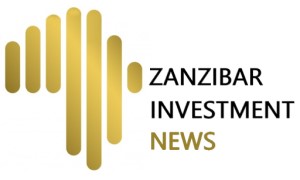The volume of cargo handled by Mombasa port has dipped for the first time in five years with players pointing to rising competition from Dar es Salaam.
Total cargo throughput at the port shrunk to 33.74 million metric tonnes last year from 34.76 million tonnes the year before, data collated by the Kenya National Bureau of Statistics suggests.
The 2.93 percent year-on-year drop pushed the volumes to the lowest levels since 2018 when it stood at 30.92 million tonnes.
The fall comes at a time businesses have complained of road tolls, multiple border charges, heavy traffic and road conditions as major cost drivers along the Northern Corridor, prompting them to consider the Central Corridor.
The northern corridor stretches about 1,700km from the Mombasa port through Kenya, Uganda, Rwanda, Burundi and the eastern Democratic Republic of Congo (DRC) while the Central Corridor is estimated at 1,300km beginning at the Port of Dar es Salaam into Tanzania, Rwanda, Burundi, Uganda and eastern DRC.
Shippers Council of Eastern Africa (SCEA), the lobby representing importers and exporters of goods, says traders in Uganda and Rwanda have been gradually increasing volumes through Dar es Salaam.
“Currently, there is competition between northern and central corridors,” SCEA chief executive Gilbert Langat, who also chairs Mombasa Port and Northern Corridor Community Charter, told the Business Daily by phone on March 24.
“The share of Mombasa Port of goods to Uganda and Rwanda has already shrunk from 75 to 80 percent in previous years to 63 percent in the last quarter of 2022. That means central corridor (Dar es Salaam) is now doing about 37 percent [of regional cargo volumes] from about a fifth previously.”
The KNBS data, sourced from the Kenya Ports Authority, indicate total throughput at Mombasa, the largest port in eastern Africa, was last year pulled down by a drop in volumes of imports.
The port handled 26.57 million tonnes of imported cargo, a 4.04 percent contraction compared with 27.69 million tonnes in the prior year, according to the provisional official statistics.
The volume of export cargo through Mombasa, however, increased 5.85 percent year-on-year to 4.77 million tonnes.
Mr Langat expressed fears that the lingering political tension in Kenya could further trim throughput at the Mombasa port this year, boosting business for relatively smaller Dar es Salaam whose capacity is estimated at 14.1 million tonnes of dry cargo and 6.0 million tonnes of bulk liquid cargo.
Kenya’s veteran Opposition Leader Raila Odinga, who lost in a closely-contested poll to President William Ruto last August, has threatened to go back to the streets after the holy month of Ramadhan, which will culminate in Eid al-Fitr celebrations around March 23.
In threatening to resume anti-government protests even as parliamentary bipartisan talks go on, Mr Odinga has cited “signs of intransigence” from Dr Ruto’s camp.
“If it is happening in Nairobi and Kisumu because all the cargo to the hinterland pass there, then basically you have closed the region that serves the hinterland,” said Mr Langat earlier.
“Whenever there are demonstrations, there’s a negative story that goes out there which is used by our competitors that Kenya is not stable and there will be delays due to skirmishes and riots even if it is just a section of the country.”
Dr Ruto agreed to bipartisan talks between his ruling Kenya Kwanza Alliance and Mr Odinga’s Azimio la Umoja coalition but has limited talks on the reconstitution of the electoral body.
The move prompted the opposition chief to call off economically devastating bi-weekly anti-government protests, which largely hit the capital Nairobi and Kisumu — key nodes for transportation along the Northern Corridor.














